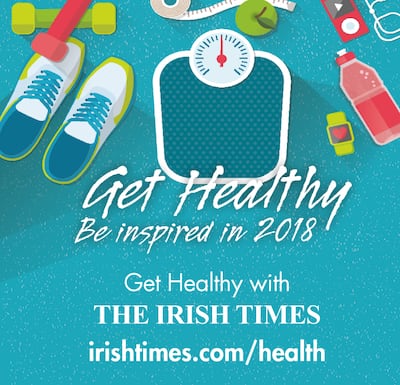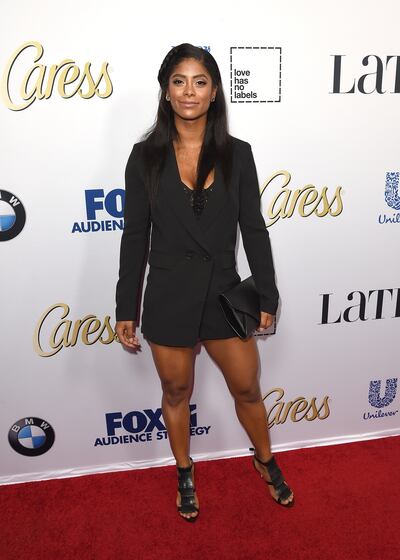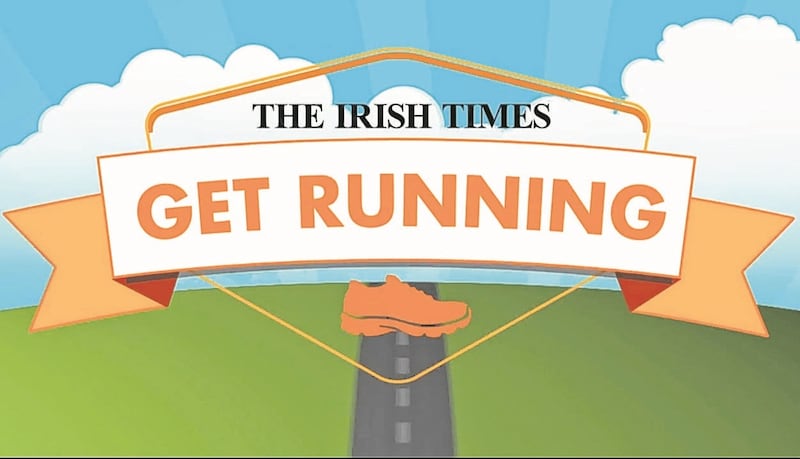"Imagine you're a Page 3 girl and they're going for the butt shot," says Chloe Madeley, helpfully.

It is a grey January morning in a gym near Leicester and Madeley, a former TV presenter turned personal trainer and Instagram phenomenon – and the daughter of daytime telly pairing Richard Madeley and Judy Finnegan – is trying gamely to teach me the correct posture for squats with weights.
Bum stuck out, shoulders pinned back, move from the hips. None of this is dignified. It is also killing my hamstrings, although there is only a wimpy 5kg weight on the bar I am lifting, compared with the 60kg she usually manages.
But Madeley is kind, funny and ridiculously encouraging. Half an hour of pumping iron with her leaves me in an unexpectedly good mood. My head feels clearer, lighter. And there is something very appealing about the insouciance with which she strolls through the weights area, past all the men in sleeveless Ts doing press-ups.
Once upon a time, gyms divided rigidly by gender: treadmills and pilates classes for the ladies; grunting men lifting weights by the mirror. Women shied away from dumbbells for fear of getting bulky or embarrassing themselves. Men’s fitness magazines featured rippled torsos and articles about protein shakes, while the female versions were all bikini bodies and how to be your happiest self.

Well, not any more. "Shed kilos, build muscle, strip fat," screams the cover of January's Women's Health magazine, alongside features on getting a "strong mind" and "killer abs". Inside, editor Claire Sanderson describes proudly how she hip-thrusted 130kg (a move that involves lying down with a barbell across your middle and pushing your hips skywards) as part of a January transformation feature.
Rival magazine Women’s Fitness, meanwhile, offers “21 days to strong”, a diet and workout plan that will ensure you can shift furniture upstairs on your own. Even Davina McCall now boasts the jutting abs and sharply carved physique of a bodybuilder, prompting the Sun to ask whether the 50-year-old has “gone too far” for her latest fitness video.
Yet she is only reflecting a cult of muscle that is all the rage on Instagram, led by a new generation of so-called fitness influencers such as Madeley, the 26-year-old Australian blogger Kayla Itsines, the 29-year-old American Massy Arias (famous not only for her abs, but for the speed with which they snapped back after the birth of her baby last year) and Alice Liveing, the British personal trainer who coached Sanderson for her hip-thrusting challenge.
Their feeds are a mixture of filmed workout routines, zippy motivational messages and photographs of their dogs and their breakfasts. Itsines in particular is hot on sharing "before" and "after" pictures of ordinary women who have followed her method. But the best adverts for their burgeoning business empires are invariably their own bodies. These women are built like athletes, not scrawny models: slim, but with biceps, calves and formidable six-packs (plus, in the case of 24-year-old US fitness guru Jen Selter, a famously Kardashian-esque behind). What is most striking, though, is how influential they have become in young women's lives.
Middle-aged readers are more likely to be familiar with Madeley’s parents than with the 30-year-old personal trainer herself, yet her diet and fitness book The 4-Week Body Blitz has shot into the January bestseller charts. You may never have heard of Liveing, but at 24 she has three bestselling books, a clothing line at Primark and numerous corporate partnerships to her name.

These women's brands were built independently of mainstream media, on Instagram and YouTube, where moody shots of perfect abs combine with ass-kicking, vaguely feminist sentiments. If that sounds superficial, their "strong in mind and body" mantra perhaps resonates deeper with anxiety-prone millennials, who increasingly use exercise to manage their mental health.
Five years ago, Madeley was working in TV, worrying that she lacked a passion in life, when her then-boyfriend introduced her to weightlifting. At the time, she says, she suffered badly from anxiety and was experiencing “panic attack after panic attack”. But lifting made her feel capable and strong.
“I would say weightlifting – this methodical act that results in physical and mental feelings of strength, capability, accomplishment – has absolutely had a massive ripple effect on my life. I feel like if I got into a sticky situation I could handle it, I can do it, it’s fine,” she says.
“If I do start to get anxious, I have an outlet, a form of CBT, something I can do to focus all my energy.” She compares lifting to cooking, another soothingly repetitive process that many find relaxing because the rhythm – all that chopping and stirring – takes over.
There is something unexpectedly touching about this, just as there is something thrilling about shattering the myth that strength and power are not feminine. But have we really learned to value bodies for what they can do, not merely how they look? Is strong becoming the respectable face of skinny?
Vicky McCann's fitness career began at the age of 13, when she got a job tidying the changing rooms of a local gym. She moved into teaching aerobics, then lifting weights. In 1990, she entered her first bodybuilding competition. Since then, she has twice been world champion in the so-called natural branch of the sport, which strictly forbids the use of steroids, male hormones and other artificial enhancements, including cosmetic surgery. She also runs her own gym in Perth, Scotland.
McCann, who at 48 still competes, says more women are entering the sport, but primarily via “bikini-body” competitions, a kind of bodybuilding-lite where contestants must be extremely toned, but much less musclebound than in traditional contests.
“It’s a halfway house, almost a cross between a fitness pageant and a beauty pageant,” says McCann, who prefers the more heavyweight version. “A lot of these women, I don’t see them as muscular – I’d almost describe it as a wedding day. They get a chance to wear a fancy bikini and have their hair and nails done and look pretty.”

Hopefully, she says, some will be inspired nonetheless to move into bodybuilding proper.
However, even this much muscle on a woman can be controversial. The actor and Strictly Come Dancing contestant Gemma Atkinson, who owes her strong physique to boxing and weights, endured sniping from some Strictly fans last year about being supposedly "too masculine" for dancing. Yet she was one of Women's Health's most popular cover stars, reflecting changing aspirations among younger women.
"We have a very different ideal of what we aspire to be. That's shifted, even looking at things like covers of magazines and female role models that have risen up the ranks," says Liveing. "Serena Williams – she wouldn't have been a typical aspirational physique before, but she's physically strong, she's amazing, she's achieved so much."
Liveing got into weights while studying musical theatre, after her dance teachers told her she wasn’t strong enough. She says the perception that lifting was not for women only made it more appealing. “I love it when my clients are shocked by their own strength, because we haven’t been allowed to believe we were able to do that until now,” she says. “It’s breaking the taboos of being as strong, if not stronger, than men.”

She argues that the biggest case for women lifting weights, or working against their bodyweight in "resistance" exercises such as press-ups, lies in the health benefits. It can help maintain bone density, which is important for avoiding osteoporosis; it can help prevent muscle wastage as women age, potentially allowing them to stay active and independent for longer. (The actor Sheila Hancock recently announced that she had taken up weights, aged 84, after realising that she was struggling to lift hand luggage into plane lockers.)
Pumping iron can also aid weight loss. The greater a woman’s muscle mass, the higher her metabolic rate and the more calories she should burn, even at rest. According to Sanderson, this is what is driving many women away from burning fat through running or cardio and towards building muscle. “I was a complete cardio queen 10 years ago, doing triathlons and spinning classes like my life depended on it and running marathons,” she says. “Now I don’t do much of that at all and I’m probably in the best shape of my life.”
But there is a crucial difference between being in shape and the very lean – “shredded” – look gaining currency. Aiming to be strong, capable and powerful is one thing. Wanting to look it takes us into murkier waters. Women can certainly build muscle by exercising, albeit more slowly than men, given their lower testosterone levels. But the “ripped” look – seemingly borrowed from bodybuilding, where every muscle stands out – involves stripping away the body fat that would otherwise blur that definition. That is where diet comes in.
Sanderson says it is important to be honest about how much effort goes into looking like the Instagram poster girls and how attainable it is for mere mortals. “It’s their job to look that way – and all power to them. They live and breathe it. But, in my experience, in order to look that lean, that cut, you have to follow a really strict nutritional plan, which not many people would want to do.”
Judging by the meal snapshots these women constantly upload, that means a high-protein, fairly low-carb diet involving a lot of eggs, sweet potatoes, kale and chickpeas. Cutting out alcohol or sugar is relatively common, as is training five or six days a week. They may look like girls next door, but these women have the iron discipline of professional athletes.

“I eat all day long, I have a very varied and balanced and healthy diet, but it’s very structured and disciplined,” says Madeley, who manages by giving herself a break from the regime every few weeks. “You get three weeks of not drinking at parties, not sharing the birthday cake at the office and you think: ‘At some point, I’m going to have to give myself at least a day off or I’m going to get really fed up.’”
McCann eats 2,000 calories a day in the run-up to a competition, when she is focused on shedding fat and revealing muscle, but her diet will be heavily restricted and precision-calculated. “I eat very bland when I’m dieting. I count out my food, weigh and measure it. But I don’t crash diet, I do it over a long period of time.” She worries, however, about newcomers to bikini-body contests relying on very low-carb plans to get in shape fast.
Eating this strictly is not necessarily disordered in itself, but rigid diets can easily be taken to extremes by vulnerable people. A recent spate of stories about anorexic people crediting bodybuilding for their recovery set distant alarm bells ringing. It is easy to see how such a regime might satisfy a need for control.
There is anecdotal evidence of people with eating disorders channeling their fixation into exercise, says Liam Preston, head of the Be Real body-image campaign, launched by a group of charities following a parliamentary report on the crisis in young people's body confidence. "They can get obsessive about going to the gym, rather than obsessing about eating. But that's a mental health problem, so I don't know that exercise solves it."
The broader problem he identifies, however, is people chasing fashions in body shape – strong or skinny – regardless of whether they are healthy. “We see so many crazes online and you’ll find people who go from one to another, trying everything. It’s about trying to build resilience, a feeling that their body is fine the way it is.”
The YMCA-led campaign is now working with schools to boost younger children’s body confidence, in the hope that this will make them less likely to seek solutions for imaginary faults in their teens. “We always try to go with the message that being happy and healthy is more important than anything else; it’s not about the way you look. If you want to go to the gym, that’s great, but are you doing it for the right reasons?”
In fairness, Instagram’s fitness queens seem intensely aware of their social responsibilities. They constantly repeat that there is not one “right” way to look, that followers should be kind to themselves, that it is all about balance.
“It’s really important, I think, to impress upon your audience the importance of not using social media as a way of comparing us – use it as a tool of information, but don’t sit there letting it make you feel bad about yourself,” says Liveing. She was originally known as Clean Eating Alice, but reverted to her name recently after becoming worried about clean eating’s association with faddy, exclusionary diets. Food matters in training, she says, but “not excessively so”.
Madeley is cheerfully upfront about putting on five pounds over Christmas. She reminds followers regularly that the aspirational images they see all over social media are invariably of fitness models at their competitive peak. (A common tactic is training hard for a photoshoot, then trickling out the resulting pictures over several weeks of posts; that way the public persona stays eternally ripped, even if the model does not.)
Sanderson, meanwhile, insists it is unfair and outdated to accuse magazines such as hers of potentially fuelling eating disorders. “We look at wellness in a much more holistic way these days – there’s much more awareness of mental health and nutrition. We don’t have a certain aesthetic – I’m almost 40, I’m curvy, I’ve got two kids and I run the biggest fitness magazine in the country.” In this month’s editorial, she stresses that, after a few Christmas parties, her abs are not looking like they did in the issue’s photoshoot – and that is just fine.
But when all you see all day on your phone is amazing bodies, it is surprisingly easy to get sucked in
But however seriously individuals take their responsibilities, the cumulative effect of scrolling through endless pictures of washboard stomachs can be powerful. While writing this article, I created an Instagram account following only fitness influencers, clean-eating bloggers and the odd celebrity suggested by the site’s algorithms once it had detected me behaving like a millennial gym bunny.
My time on fitness Instagram was, admittedly, nicer than my usual social media experience (arguing about Brexit on Twitter). But when all you see all day on your phone is amazing bodies, it is surprisingly easy to get sucked in. On day one, I rolled my eyes at all the posts about sautéed kale. After a week, I had been running, cooked a lot of chickpeas and wondered about the hand weights that have spent the past 15 years in the loft.
Arguably, that is no bad thing, given that the biggest threat to the average Briton’s health is failing to get off the sofa. Many of us need a gentle prod. But the risk of promoting any one shape as ideal is that those whose bodies do not conform naturally can easily be left feeling inadequate. “Thank God we’re getting rid of the stigma that women shouldn’t have muscles, that if a woman does she looks like a man. I’m so happy we’re breaking down those barriers,” says Madeley. “But why do we need to bash other people in order to get there?”
– Guardian

Sign up for one of The Irish Times' Get Running programmes (it is free!) and Get Healthy for 2018.
First, pick the programme that suits you.
- Beginner Course: This programme is an eight-week course that will take you from inactivity to being able to run 30 minutes non-stop.
- Stay On Track: The second programme is an eight-week course for those of you who can squeeze in a 30- to 40-minute run three times a week.
- 10km Course: This is an eight-week course designed for those who can comfortably run for 30 minutes and want to move up to the 10km mark.
Best of luck!











